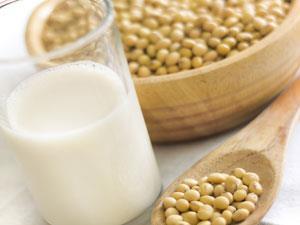
There have already been several successful demonstrations using natural biomass as a precursor for producing nanomaterials. Inspired by these endeavours, Shaojun Dong and colleagues at the Chinese Academy of Sciences have developed a simpler, time-saving method for preparing bifunctional nanomaterials, in just three hours, using soy beans.
Soy beans contain a good source of carbon, oxygen and nitrogen thanks to their natural sugars, proteins and lipids. Using a domestic soy milk machine, the team converted the beans into soy milk, before hydrothermally heating the solution to 180°C to form nitrogen-doped nanodots. During this one-step treatment process, the milk undergoes carbonisation, surface functionalisation and doping simultaneously.
This is ‘a true environmentally friendly process for synthesis of carbon nanodots’, says Yulin Deng from the Georgia Institute of Technology, US. ‘The only chemical used in this process is soy milk, which is a natural product. The technique can also be scaled up easily and this research provides a great opportunity for industry to produce an eco-friendly carbon nanomaterial,’ he adds.
The resulting carbon nanodots show good water solubility and interesting photoluminescent properties, ideal for potential bioimaging applications. Dong also went one step further and tested the FCNs’ electrocatalytic activity towards oxygen reduction reaction (ORR). Gary Baker from the University of Missouri-Columbia, US, says: ‘A particularly remarkable aspect of these carbon nanodots is that they apparently display good electrocatalytic activity toward the ORR, implying a relatively unexplored avenue for these nanomaterials.’
This method already provides high purity and time savings, but ‘it is expected that other natural sources could also be used to synthesise FCNs’, explains Dong. There are more challenges to overcome and for Dong that includes developing a more effective way of producing high quality FCNs that display higher quantum yields.
References
- C Zhu, J Zhai and S Dong, Chem. Commun., 2012, DOI: 10.1039/c2cc33844k






No comments yet